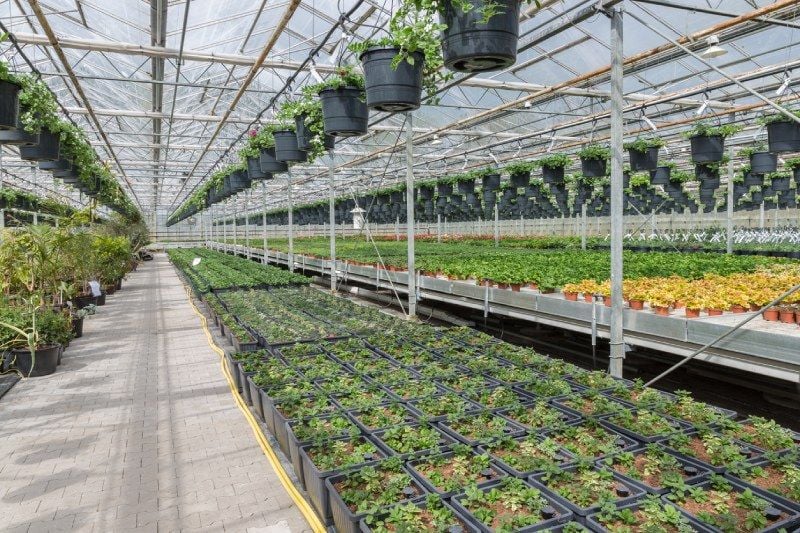What is the Ideal Greenhouse Temperature?
)
Greenhouse plants and crops depend on certain ideal conditions for optimal growth and maximum harvest. One important factor is temperature. You may be wondering what temperature is too hot for a greenhouse.
The ideal greenhouse temperature for plant growth is between 21 to 27 C or 70 to 80 °F. Temperatures above or below this range can stress the plant and slow down photosynthesis producing unhealthy crops and lower yields.
Another factor that contributes to the temperature is relative humidity. High levels of humidity can harm your harvest because it increases the chance of diseases. In general, the ideal relative humidity is at 80%. This is the level that produces the fastest growth rates for greenhouse plants.
Here are some tips on how to maintain ideal greenhouse temperature and humidity:
Heating Solutions Help Maintain Ideal Greenhouse Temperature
It is essential to maintain a consistent temperature inside your greenhouse. During the winter season, this can be compromised by uncontrolled heat loss. Older greenhouses may develop cracks around doors and windows that could allow cold wind to blow in. Make sure heat does not escape through gaps and crevices.
Summer time can pose problems of overheating. How hot can a greenhouse get depends on several factors including the material of the structure, radiation from the sun, ambient temperature and even cloud cover. The effectiveness of your greenhouse temperature control system is essential in keeping ideal temperature consistent throughout your grow room.
Use Ventilation Solutions To Keep Air Circulating
Plants rely on a steady staple of carbon dioxide to maintain photosynthesis. Ventilation not only provides this essential resource but also replaces warm moist air with drier air for humidity control. During the winter months, ventilation plays a vital role in deflecting cold drafts from entering the greenhouse.
Keep Solar Radiation Under Control
Plants need a lot of sunlight. Letting solar radiation into the greenhouse stimulates the process of photosynthesis but it can also bring in unwanted heat due to the "greenhouse effect."
Shading materials help control the amount of solar radiation into the greenhouse. As long as the ventilation rate is constant, the amount of radiation can be reduced by 50 percent. Shading, however, also reduces the amount of sunlight the plants need, so balance these factors carefully.
Employ Cooling Strategies To Avoid Overheating
If temperatures soar to extremes and the ventilation and shading systems are unable to control it, then it's time to consider an evaporative process for greenhouse cooling.
Evaporative cooling works by drawing hot air from the outside and passing it through a pad soaked with water. This results in significant heat reduction and increased moisture preventing the plants from wilting.
If you are looking for customized greenhouse heating and cooling systems, Cultivate and Equipment offers HVAC solutions that provide the optimal temperature for maximum yields. Contact us for a consultation!
| Tags:Greenhouse |

